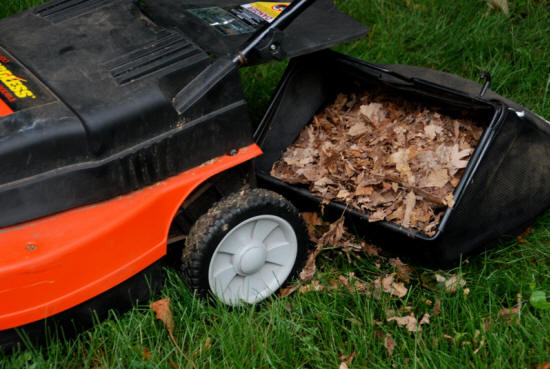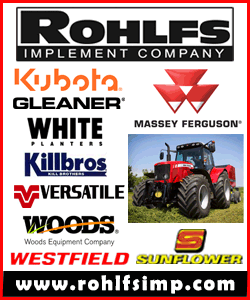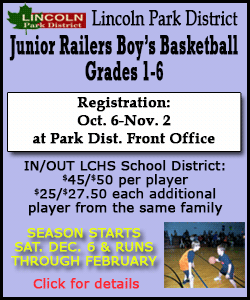|
 Gardening
Column Gardening
Column
Checklist for Fall Garden and Landscape Care
by Melinda Myers
 Send a link to a friend
Send a link to a friend
[October 18, 2014]
You
can see and feel the change of seasons. Fall color is starting to
appear, pansies, mums and asters are in the garden center and your
thoughts are turning to preparing your landscape for winter. |
|
 Those in warm climates are switching to winter annuals, while
those in colder regions are fortifying their landscapes for the cold
winter ahead. No matter where you live, invest some time in
preparing your landscape for the change in seasons. Dedicating some
time now will pay off with healthier more beautiful plants next
spring. Those in warm climates are switching to winter annuals, while
those in colder regions are fortifying their landscapes for the cold
winter ahead. No matter where you live, invest some time in
preparing your landscape for the change in seasons. Dedicating some
time now will pay off with healthier more beautiful plants next
spring.
Continue to mow the lawn high as long as it continues to
grow. There’s no need to cut it short unless that is the look you
prefer.
Fertilize the grass with a low nitrogen slow release
fertilizer like Milorganite (milorganite.com). Fall fertilization
provides the greatest benefit to your lawn and gives you the best
value for the time and money invested.
- Those in cooler regions growing bluegrass, fescue and
perennial ryegrass should fertilize around Labor Day when
temperatures start to cool. Then make a final application
between Halloween and Thanksgiving before the ground freezes.
- Those in warmer climates growing centipede, Bermuda and
zoysia should also fertilize around Labor Day. However, be sure
to make the last fall application at least one month prior to
the average first killing frost.

- Shred leaves as they fall. Leave some on the lawn to
add organic matter and nutrients to the soil. As long as you can
see the grass blades through the shredded leaves your lawn will
be fine.
Use the rest of the shredded leaves in your compost pile, as
mulch on top of the soil or as a soil amendment. Just dig a two
to three inch layer into the top 12 inches of annual or new
planting beds. These leaves will break down and add organic
matter. By spring the leaves will decompose and the garden bed
will be ready to cultivate and plant.
[to top of second column] |

Plant a few bulbs now for a colorful early spring display.
Incorporate compost, aged manure or other organic matter into the
planting area. Add a low nitrogen slow release fertilizer at the
time of planting. In general, plant bulbs two to three times their
vertical diameter deep. Follow specific planting and spacing
directions on the package or tag.
- Select animal-resistant bulbs to avoid squirrels digging up
the bulbs and deer and rabbits eating the blooms. Daffodils,
hyacinths, grape hyacinths and squills are a few to consider.
Little Tommies (Crocus tommasinianus) tend to be more squirrel
resistant than other crocus varieties.
- Those gardening in mild climates need low chill bulbs that
will thrive and flower after a mild winter. Or purchase
precooled bulbs for winter planting and spring flowering.
Allow disease- and insect-free perennials to stand for
winter. This will increase their winter hardiness and your
enjoyment. The dried leaves, stems and seedheads provide beauty
for you to enjoy, seeds for the birds and overwintering homes
for many butterflies and beneficial insects.
Plant trees, shrubs and perennials. The soil is warm and
the air is cool – perfect conditions for planting and
establishing trees, shrubs and perennials. And for those lucky
enough to garden in warm climates, add a few winter annuals.
Continue to water the landscape as needed throughout the
fall. Be sure to water evergreens and new plantings thoroughly
before the ground freezes.
No matter where you live or the size of your garden, get
outdoors and enjoy the beauty of fall. And be sure to invest a
bit of energy now to insure your landscape is ready for the
season ahead.
[Melinda Myers]
Gardening expert, TV/radio host,
author & columnist Melinda Myers has more than 30 years of
horticulture experience and has written over 20 gardening books,
including Can’t Miss Small Space Gardening and the Midwest
Gardener’s Handbook. She hosts The Great Courses “How to Grow
Anything” DVD series and the nationally syndicated Melinda’s
Garden Moment segments. Myers is also a columnist and
contributing editor for Birds & Blooms magazine. Myers’ web
site,www.melindamyers.com, offers gardening videos and tips. |